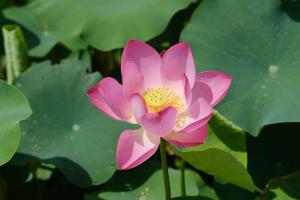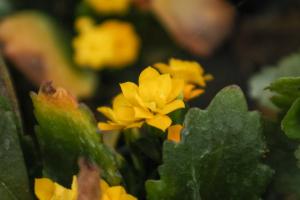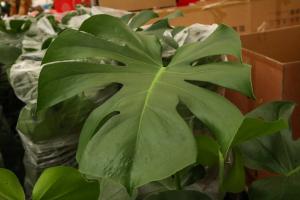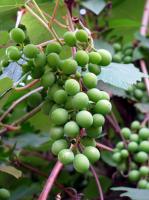Why do Plant Leaves Drip Water? An Explanation of Guttation
Have you ever noticed droplets of water on the leaves of your houseplants or in your garden? This phenomenon is known as guttation, and it occurs when plants release excess water from their leaves. In this article, we will explore why plant leaves drip water and the science behind it.
What is Guttation?
Guttation is the process by which plants excrete excess water in the form of droplets from their leaves. Unlike transpiration, which is the loss of water from leaves in the form of water vapor, guttation releases liquid water. Guttation typically occurs in the early morning hours when the relative humidity is high and the soil is moist.
How does Guttation Work?
During the process of guttation, water is pushed from the roots up into the leaves through the xylem cells. The water pressure in the xylem cells builds up and creates a force that pushes water out of the plant through tiny pores on the leaves called hydathodes. These hydathodes are located on the tips or edges of the leaves and can be seen as small droplets of water.
Why do Plants Guttate?
Plants guttate for several reasons. The primary reason is to get rid of excess water that they cannot use. During the process of photosynthesis, plants take in carbon dioxide and release oxygen. In order to take in carbon dioxide, plants must open their stomata, which are small pores on the underside of the leaves. When the stomata are open, water vapor is also released. If the humidity is high and the plant's roots are taking in more water than they need, the excess water will be pushed out through the hydathodes.
Another reason why plants guttate is to rid themselves of toxic substances. Plants that are grown in soil that is contaminated with heavy metals or other toxins will excrete these substances in the form of droplets through guttation. This process is essentially a way for plants to detoxify themselves.
What are the Effects of Guttation on Plants?
Guttation is generally not harmful to plants, and in fact, it can be beneficial. Guttation helps to maintain the water balance in the plant and prevent dehydration. It can also help to remove excess salts and other toxic substances from the plant's system.
However, if guttation occurs too frequently or in excessive amounts, it can be a sign of overwatering or other problems with the plant's root system. If you notice that your plants are consistently guttating, it may be time to check the soil moisture levels and adjust your watering schedule accordingly.
Conclusion
Guttation is a natural process that occurs in plants to rid themselves of excess water and other substances. While it is generally not harmful to plants, it can be a sign of overwatering or other issues with the plant's root system. By understanding the science behind guttation, we can better care for our plants and ensure their long-term health and vitality.

 how many times do yo...
how many times do yo... how many planted tre...
how many planted tre... how many pine trees ...
how many pine trees ... how many pecan trees...
how many pecan trees... how many plants comp...
how many plants comp... how many plants can ...
how many plants can ... how many plants and ...
how many plants and ... how many pepper plan...
how many pepper plan...































